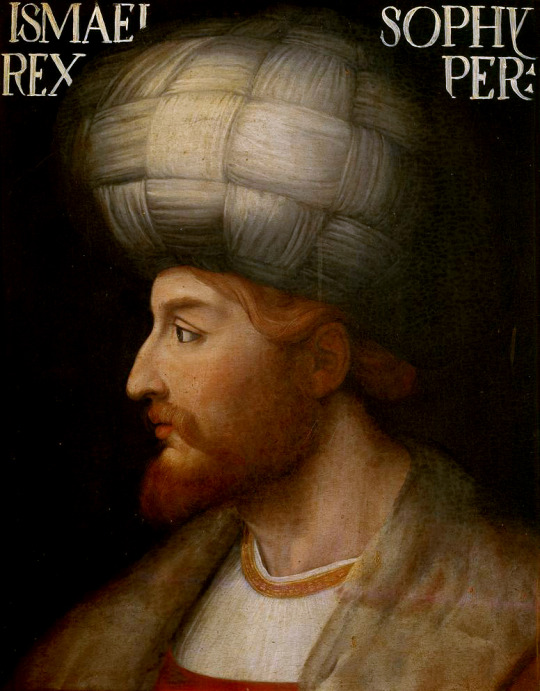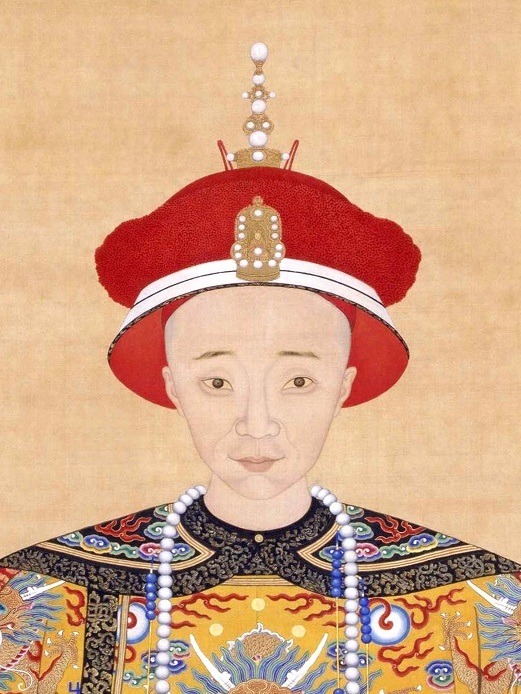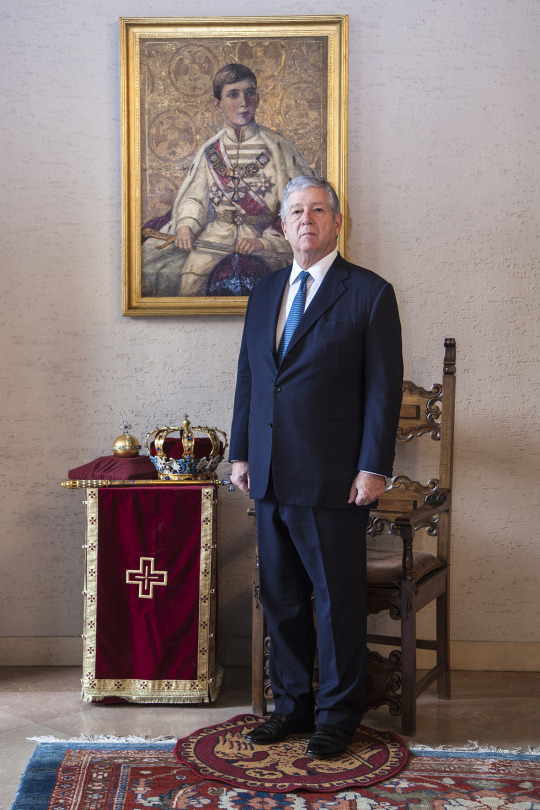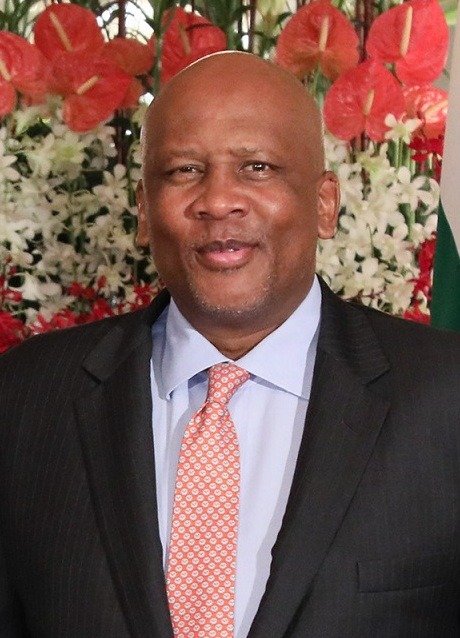#shah ismail
Text



Heat and Dust (1983) | dir. James Ivory
#heat and dust#heat and dust 1983#james ivory#ismail merchant#ratna pathak#ratna pathak shah#julie christie#ruth prawer jhabvala#cinema#films#movies#world cinema#classic cinema#1980s#cinematography#british cinema#film scenes#movie scenes#screencaps#film screencaps#movie screencaps#cinephile
14 notes
·
View notes
Text
You really would think the Supreme Leader would learn his lesson:
Every time Iran pokes Pakistan with a broken stick Pakistan hits them in the balls with a tire iron. This is just Shah Ismail syndrome in action.
#lightdancer comments on current events#iran#pakistan#from a certain gallows humor POV it is admittedly funny#the latter day Shah Ismail is poking their Sunni equivalents#and they get hit a thousand times harder than they hit it#and they're still trying to goad Pakistan#the nuclear armed basketcase that's one crisis from falling Pakistan#remind me why people get unhinged over criticizing these reactionary murderers again?
0 notes
Text
Straight love stories are like: we saw each other and thought they were hot, we kissed and now we’re in love
Queer love stories are like: “He is half of my soul as the poets say”, “I would've loved you if we had more time”, “He was a boy made of fire who'd been turned to frost. He was meant to burn”, “all the people are fake. Theyre made out of metal. But I like you… and that is not fake”, “Ismail Shah, did he forget the color of Isfahan's sky?”
#no hate meant towards straight love stories#i just wanted an excuse to post abt my fav gays#NO BUT THE WAY IVE CRIED OVER ALL THE SHIPS IVE MENTIONED????#the song of achilles#achilles#patroclus#patrochilles#they both die at the end#tbdate#rufus emeterio#mateo torrez#julian diaz#cemetary boys#yadriel vélez flores#young royals#wille x simon#wilhelm#class netflix#dhruv sanghvi#dhruv x faruq#faruq dhruv#faruq manzoor
2K notes
·
View notes
Text

33 Greco-Roman Family Tombs Found in Aswan, Egypt
An Egyptian-Italian archaeological mission has uncovered 33 family tombs from the Greco-Roman period near the Aga Khan Mausoleum in Aswan, Egypt.
The joint mission, led by Dr. Mohamed Ismail Khaled, Secretary-General of the Supreme Council of Antiquities, and Professor Patrizia Piacentini from the University of Milan, made the announcement earlier this month. The tombs, discovered west of Aswan’s Nile, date back to the Late Period and the Greco-Roman era, spanning from the sixth century BCE to the third century CE.
The Aga Khan Mausoleum, the resting place of Aga Khan III, Sir Sultan Muhammed Shah, who passed away in 1957, now sits above a necropolis with over 400 tombs. Dr. Khaled noted that it adds a new historical dimension to the Aga Khan area. The tombs vary in architectural style, with some featuring arched entrances and open courtyards made from mudbrick, while others are directly carved into the mountain rock. This diversity reflects the social stratification of the period.
Among the notable finds are mummified remains and funerary objects, including clay figures, sacrificial tables, ceramics, and painted cartonnages. An intriguing discovery within a stone coffin revealed the mummified remains of an adult and a child, likely adhered together by embalming fluids. Further analysis is planned to understand their relationship.



Anthropological and radiological studies have provided insights into the health conditions of buried individuals. Dr. Patricia Piachenti from the University of Milan noted that 30% to 40% of the deceased were infants, children, or adolescents. This high mortality rate among the young offers clues about prevalent diseases during that period. The remains of several adult women showed signs of pelvic bone trauma, suggesting childbirth complications or other medical conditions. Other mummies exhibited evidence of anemia, malnutrition, chest diseases, tuberculosis, and osteoporosis.
“Initial studies reveal that many individuals suffered from infectious diseases and bone disorders,” said Dr. Piacentini. “Some adult females showed signs of medical interventions such as amputations and bone trauma, indicating that ancient Aswan had developed some medical practices.”
Dr. Ayman Ashmawy, Head of the Egyptian Antiquities Sector, said that the lower parts of the necropolis were likely reserved for the middle-class residents of Aswan Island, including physicians, artisans, merchants, and storekeepers. The upper parts of the necropolis, however, appear to have been reserved for the wealthier upper class. This social stratification is reflected in the differing architectural styles and the types of artifacts found within the tombs.



The discoveries also include remains of colored cartonnage, clay and stone figurines, wooden coffins, and offering tables. The tombs’ architectural complexity reflects the advanced skills of the ancient craftsmen who overcame the challenges of digging into rock and constructing low-ceilinged funerary rooms and galleries.
The mission has employed the latest technology, including X-ray and CT scans, to analyze the mummies and artifacts. These technologies have allowed researchers to create three-dimensional reconstructions of the mummies and identify items such as bracelets found on some individuals.
By Dario Radley.



#33 Greco-Roman Family Tombs Found in Aswan Egypt#Aga Khan Mausoleum#Late Period#Greco-Roman era#ancient grave#ancient tomb#ancient mausoleum#ancient artifacts#archeology#archeolgst#history#history news#ancient history#ancient culture#ancient civilizations
37 notes
·
View notes
Text

Pari Khan Khanum (1548–12 February 1578, aged 29) was a Safavid princess, the daughter of the Safavid king (shah) Tahmasp I (r. 1524 – 1576) and his Kumyk consort, Sultan-Agha Khanum. An influential figure in the Safavid state, Pari Khan Khanum was well educated and knowledgeable in traditional Islamic sciences such as jurisprudence, and was an accomplished poet.
She played a crucial role in securing the succession of her brother Ismail II (r. 1576–1577) to the Safavid throne. During Ismail's brief reign, her influence lessened, but then increased during the reign of Ismail's successor, Mohammad Khodabanda (r. 1578–1587), even becoming the de facto ruler of the Safavid state for a short period. She was strangled to death on 12 February 1578 at Qazvin because her influence and power were perceived as dangerous by the Qizilbash.
14 notes
·
View notes
Text








Don't forget me.
Ismail Shah, did he forget the color of Isfahan's sky?
320 notes
·
View notes
Text
so when Dhruv said "Ismail Shah, Isfahan Ke Aasman Ka Rang Bhoola Tha Kia?" he meant that just like 'that asmaani guy' never forgot his first home, Dhruv isn't gonna forget the first person who felt like home to him.
(the home they can't return to)
Brb, screaming, crying, throwing up-👍
#Class#dhruv x faruq#faruv#dhruv sanghvi#faruq manzoor#cla$$ netflix#cla$$#chayan chopra#chintan rachchh
58 notes
·
View notes
Note
so what's the difference between an ismail shi'a and twelver shi'a?
Ismailiyyas are a sub-branch of Shi'a Islam that differed from the Twelver sub-branch (Ithna Ashariyyas) regarding the succession of the Divine Imams. A Shi'a Muslim is any Muslim that believe that Ali (a), the cousin of Prophet Muhammed (pbuh&hf) was the rightful successor and Imam of the Muslim community, as opposed to the Sunni belief that Abu Bakr was the first Muslim caliph.
An Imam in Shi'a theology is a progenitor of the Prophet Muhammed (pbuh&hf), through his daughter Fatima (sa), and are considered religious and spiritual leader for the Muslim community. They are infallible (Ma'soom) and have esoteric (batin) & exoteric (zahir) knowledge of the Qur'an's hidden meanings, hence why they have ultimate authority regarding the Qur'an's teachings. The Imams are also related to various hadiths that help give basis for Shi'a Islamic theology and jurisprudence. The first Imam among the Shi'as is Ali (a).
Twelvers believe that upon the 6th Imam Ja'far as-Sadiq (a) death, his son Musa ibn Ja'far (a) became the 7th Imam. The Ismailiyyas believe that it was instead Musa's (a) brother, Ismail ibn Ja'far (a) who became the 7th Imam, hence why Ismailiyyas are sometimes referred to as Seveners as to distinguish them from their Twelver counterparts. The Twelvers believe that Ismail (a) died before his father's death, thus making Musa (a) the sole candidate for the Imamate. The line of Imams continues with the twelth, with the last one currently being in occultation, twelvers refer to him as the Mahdi (atfs). The Ismailiyyas believe that despite Ismail's (a) death, the Imamate continued through his son Muhammed ibn Ismail.
The majority of Shi'as are twelvers, whereas the Ismailiyyas make the second largest minority of Shi'as. The only two surviving branches of Ismailism are Nizari Ismailism & Tayyibi Ismailism. Nizari Ismailism was founded by Hassan ibn al-Sabbah after converting from Twelver Shi'ism to Ismaili Shi'ism. Hassan supported Nizar ibn al-Mustanzir as the Eighteenth Imam and caliph of the Fatimid dynasty, while other Ismailiyyas held that his brother Al-Musta'li was the next Imam and Fatimid caliph. Supporters of Al-Musta'li are referred to as Tayyibi or Musta'li Ismailiyyas. The Nizari's current Imam of the time (Imam e Zaman) is Aga Khan IV or Shah Karim al-Husayni, while the Tayyibis maintain that their current Imam is in seclusion after a power struggle in the Fatimid dynasty and are now led by a line of religious leaders known as Da'i al-Mutlaq (Great Missionary).
38 notes
·
View notes
Text
Ismail Shah, did he forget the color of Isfahan's sky?
80 notes
·
View notes
Text
One of my many frustrations as an MC and MCK.
When Bayezid makes the (stupid) decision to take refuge with Shah Tahmasp, why wouldn't Firuze make a little comeback? It would have been interesting to see her interact with Bayezid. Due to the liberties taken by the writers with the story, we're no longer close to that for this fiction (especially since I love Firuze, I would have liked Suleiman to discover the truth after it was out of reach just for see his face when he realizes how he is not as attractive as he likes to believe and realizes his stupidity).
Then why not show Pari Khan Khanum during Bayezid arc, an important figure for the Safavids who played an important role in the rise of her brother Ismail II, then perhaps killed him since he had become dangerous because he has been locked up for 19 years (I pay attention to black legends, that's why I say maybe). Pari Khan Khanum was eventually strangled to death. Seeing her would have been an interesting figure in parallel with the Sultanate of Women. She becomes one of the most powerful "blood princesses" as Mihrimah will become, a woman of power who had to face several dangers including the leader of their own country (like Kosem and Turhan for example) and had to get rid of this leader who had become crazy and dangerous after years imprisoned (Ibrahim in Kosem's case for reasons of state and perhaps Pari Khan Khanum if she actually killed his brother) after spending years doing everything to save them (Kosem must have pleaded for Ibrahim's life with Murad surely and Pari Khan Khamun must have shown a lot of cunning to put her brother on the throne) before dying of strangulation (like Kosem). It would have been very interesting to see her in some scenes or only mention her in MCK for introduce the rise of Mihrimah (even though the show portrays Mihrimah as powerless, unlike history) and the rise and fall of female regents like Kosem.
Another frustrating point is that there is no Shah Abbas in MCK unlike Shah Tahmasp. Instead we were served a bad plot with Farya's uncle (sorry for those who liked it, that's just my point of view). Plus like Murad , Shah Abbas got a terrible childhood ,inherited a very unstable situation (although in the case of Murad it was not the fault of Kosem who managed the regency well and did the best she could) which could announce their terrible paranoia ;their loved ones will suffer although even if they are competent leaders, the succession will leave something to be desired because of their faults ( at least in the case of Murad with Ibrahim, I am not sure about Shah Safi the grandson of Shah Abbas) , which would be an interesting parallel. The screenwriters destroy everything even when the best scenario of these historical events is better than fiction.
P.S: I'm talking about historical Murad IV whom I respect although he does things that I disapprove of. The Show Murad is in my eyes a kid who is stuck for eternity in a phase of adolescent crisis and who blames everyone including his mother 24 hours a day and thinks that he is the center of the world to the point that he tires me out (sorry again for Show Murad fans, this is once again just my opinion)
#Frustration#magnificent century kosem#magnificent century#kosem sultan#Turhan Sultan#Mihrimah Sultan#suleiman the magnificent#historical interpretation#historical inaccuracies#Murad IV#Sultan Murad#women in power
10 notes
·
View notes
Photo

The Shibanid (Shaybanid) Conquests, 1500-1510.
by u/Swordrist
This is my attempt at covering an underapreciated area of history which gets next-to no coverage on the internet. Here's some historical context for those uneducated about the region's history:
Grandson of the former Uzbek Khan, Abulkhayr, Muhammad Shibani (or Shaybani) was a member of the clan labeled in modern historiography as the Abulkhayrids, who were one of the numerous tribes which were descended from Chingis Khan through Jochi's son, Shiban, hence the label 'Shibanid' which is used not only in relation to the Abulkhayrids who ruled over Bukhara but also for the Arabshahids, bitter rivals of the Abulkhayrids who would rule Khwaresm after Muhammad Shibani's death and for the ruling Shibanid dynasty of the Sibir Khanate.
After his grandfather's death in 1468, Shibani's father, Shah Budaq failed to maintain Abulkhayr's vast polity in the Dasht i-Qipchak, as the tribes elected instead the Arabshahid Yadigar Khan. Shah Budaq was killed by the Khan of Sibir and Shibani was forced to flee south to the Syr Darya region when the Kazakhs returned and proclaimed their leader, Janibek, Khan. Shibani became a mercenary, serving both the Timurid and their Moghul enemies in their wars over the eastern peripheries of Transoxiana. After the crushing defeat of the Timurid Sultan Ahmed Mirza, Shibani succeeded in attracting a significant following of Uzbeks which formed the powerbase from he launched his conquests.
Emerging from Sighnaq in 1499, Muhammad Shibani captured Bukhara and Samarkand in 1500. In the same year he defeated an attempt by Babur (founder of the Mughal Empire) to take Samarkand. Over the course of the next six years, Shibani and the Uzbek Sultans conquered Tashkent, Ferghana, Khwarezm and the mountainous Pamir and Badakhshan areas. In 1506, he crossed the Amu-Darya and captured Balkh. The Timurid Sultan of Herat, Husayn Bayqara moved against him however died en-route and his two squabbling sons were defeated and killed. The following year he crossed the Amu-Darya again, this time vanquishing the Timurids of Herat and Jam and subjugating the entirety of Khorasan east of Astarabad. In 1508, he raided as far south as Kerman and Kandahar, however he moved back North and launched two campaigns against the Kazakhs, but the third one launched in 1510 ended in his defeat and retreat to Samarkand at the hands of Qasim Sultan.
The Abulkhayrid conquests heralded a mass migration of over 300 000 Uzbeks to the settled regions of Central Asia from the Dasht i-Qipchak. They heralded the return of Chingissid political tradition and structures and the end of the Persianate Timurid polities which had dominated the region for the last century. It forever after changed the demographic of the region. His reign was also the last time Transoxiana was closely linked with Khorasan, as following the shiite Safavid conquests the divide between the two regions would grow into a permanent one.
In 1510, Shibani faced his end when he moved to face Ismail Safavid, who was making moves on Khorasan. Lacking the support of the Abulkhayrid Sultans, who blamed him for their defeat against the Kazakhs earlier that year, he faced Ismail anyway, where he was defeated, killed and turned into a drinking cup.
Shibani's death caused a complete reversal of the Abulkhayrid fortunes. Khorasan and the rest of his empire fell under Safavid dominion. However in Khwaresm, Sultan Budaq's old rivals the Arabshahids expelled the qizilbash and founded their own Khanate, based first in Urgench and then Khiva. In Transoxiana, Babur lost the support of the populace when he announced his conversion to Shiism and his loyalty to Shah Ismail, which allowed the Abulkhayrids to rally behind Shibani's nephew, Ubaydullah Khan and expel the Qizilbash. Nonetheless, the Abulkhayrids would never again hold as much power as they briefly did when led by Muhammad Shibani Khan.
40 notes
·
View notes
Note
There's an article in National Review (right libertarian magazine) called "Why Are Academics Ignoring Iran's Colonialism?" in it is a quote reading "Even without its violations of other countries’ sovereignty, Iran itself is an empire, with ethnic Persians dominating the Arabs, Kurds, Balochis, Azeris, Turkmen, Lur, Gilakis, and Mazandaranis." this should give you pause regarding what it means (especially rhetorically) to describe Iran's internal ethnic oppression as colonialism.
this is mysterious to me. my use of colonialism comes from a kurdish communist I knew who was from iranian kurdistan, so by the same reasoning "this should give you pause". but I'm not interested in playing rhetorical tennis—the example I gave was of the forced displacement of many thousands of kurds under shah ismail for the purposes of establishing buffer populations. this separation of a people from their land and culture just is a colonial action that khorasani kurds still experience. that is the legacy any subsequent state has inherited. I wouldn't describe iranian policy toward minorities as colonialist writ large (and didn't intend to, if that's what it sounded like), but there is an intelligible situation of indigeneity relative to the state among kurds because of a history of subjecting the population to colonialist resettlements, displacements, and cultural dispossession. come for me for my rhetorical sins when I've called iran blanket colonialist in a publication people actually pay attention to but until such an impossible thing comes to pass, well...
6 notes
·
View notes
Text
Israel’s strikes on Hezbollah commander Fuad Shukr in Beirut and Hamas leader Ismail Haniyeh in Tehran signal that no leader within Iran’s “axis of resistance” is beyond reach. But what exactly is this alliance, how tight is Iran’s grip, and what are the stakes for the region and the United States if Israel goes to all-out war with it?
The “axis of resistance” refers to a longstanding and evolving coalition of states and groups, originally fostered in the 1950s by Arab nationalist regimes like Egypt, Syria, and Iraq, which used proxies to challenge Western and Israeli influence in the Middle East. Today Iran leads the axis, fostering and supporting groups like Hezbollah and various Shiite militias across the region.
In a recent panel organized by the Quincy Institute, a speaker with long experience in Iraq and a contact point there for American diplomats, recalled a U.S. official asking her what exactly the “axis of resistance” was resisting? The answer is the United States and all its works, because they share a view of the United States as opposed to them and all their works. Resistance is driven by a mutually reinforcing set of ideological and geostrategic imperatives.
The revolutionary regime in Iran, for example, remembers Washington as Britain’s partner-in-crime in staging the coup that brought the Shah to power in 1953 and, among other things, helping Saddam Hussein try to throttle the revolution in its crib in the 1980s, and imposing severe economic sanctions on the Islamic Republic ever since. The U.S. has also been a steadfast supporter of Israel, which for ideological and more recently strategic reasons, Tehran seeks to weaken, and if possible, destroy. Since 1979, and especially following the U.S. invasion of Iraq, Iran has been the uneasy leader of the axis of resistance, expanding its influence in regional conflicts, including in Syria, Lebanon, and Yemen—but its allies are troublesome ones.
Many states see alliances as power-maximizing mechanisms, and Iran is no exception. This is true even of powerful countries like the United States. Iran, unlike the U.S., is stuck with regional allies that don’t qualify as states and are easy prey for their enemies. They are also allies prone to “chain ganging,” that is dragging their patron into potential wars it doesn’t want to fight, through actions like Kataib Hezbollah’s January attack on Tower 22 that killed three U.S. soldiers, the Houthi drone strike on central Tel Aviv in July, and Hamas’s Oct. 7 terrorist attack on Israel, which Tehran claimed it was not informed about. Iran has expended a great deal of effort to keep its axis of resistance from starting things it can’t finish.
The Houthis in Yemen, for instance, resent the United States because it supported both Saudi Arabia and the United Arab Emirates in their joint effort to block a Houthi drive to seize control of the Yemeni state. This grievance was compounded by U.S. support for Israel’s campaign in Gaza. Although Houthi attacks against international shipping might have been encouraged by Iran, which has stocked Houthi stockpiles over the years on the grounds that any enemy of the al-Saud was a friend of Tehran’s, the Houthis were sufficiently motivated to act. “Curse on the Jews” has long been a feature of their rhetoric and an official slogan.
As an Iranian proxy, the Houthis’ success in choking off shipping lanes in the Red Sea has not been terribly useful. Iran is trying to reduce its isolation and hurt Israel—appearing to be the mastermind of capers to impose increased cost on global shipping does not advance either goal.
Houthis are enjoying the domestic and regional high of resistance against world powers, however, and will continue to do so as long as the war in Gaza grinds on. In effect, the Houthis have found a way to sanction the international community, ineffective as it may be. What the Houthis lack in financial muscle, they make up for with Yemen’s geography. Resistance in the Red Sea has also proved a helpful distraction from discontents at home over economic hardship and a good recruitment tool for boosting the ranks. They have even resisted various Saudi inducements to stop firing. But the war in Gaza will not grind on forever and countries paying the price for Houthi shenanigans will begin to push back.
Lebanese Hezbollah is the elder brother within the axis of resistance. As a political party it is embedded in a broader political structure that has cannibalized the Lebanese state and, for that matter, Lebanese society by maintaining an armed wing more powerful than the Lebanese military, paralyzing the country’s political processes, exploiting Lebanon’s economic issues like the fuel crisis to boost its popularity, and entangling Lebanon in regional conflicts ranging from Syria’s civil war to tensions with Israel. This in turn provides ample political cover for the group’s control of southern Lebanon and its presence along the Blue Line which serves as a provisional border between Israel and Lebanon. It also constrains Hezbollah’s freedom of action.
Unlike Iran, Hezbollah is deployed right on Israel’s border. Iran has therefore invested billions of dollars in keeping the group supplied with a wide range of missiles and rockets, while working closely with Hezbollah’s intelligence apparatus. The strategic dimension of the relationship lies in the presumed deterrent effect of a full-scale Hezbollah missile and rocket attack against Israel on any plans Israelis might have to strike Iran’s nuclear infrastructure or leadership.
Until last weekend deterrence seemed to be mutual. Tensions escalated on Saturday when Israel reported a Hezbollah missile strike on the Golan Heights that killed 12 children and teenagers, prompting an Israeli response on Tuesday with an airstrike on a building in Beirut, targeting Fuad Shukr, the Hezbollah commander they hold responsible. This was followed with the assassination of Hamas leader Ismail Haniyeh in a highly securitized area of Tehran.
The threshold for Hezbollah’s use of its vast missile inventory is correspondingly high. The problem for Israel, Hezbollah and their respective patrons is that no one really knows where the threshold lies. A full-scale war between Israel and Hezbollah would devastate Lebanon and northern Israel, resulting in tens of thousands of deaths while most likely failing to destroy Hezbollah.
While Lebanese Hezbollah remains a significant force on Israel’s border, Iranian-backed militias in Iraq and operating in Syria pose a different but equally concerning threat due to their proximity to U.S. troops. The idea that they can somehow be dismantled or sidelined ignores how deeply entrenched these groups are in Iraq and how their rise was intertwined with U.S. intervention in the first place. The three most problematic groups for U.S. interests in Iraq are Kataib Hezbollah, Asaib Ahl al-Haq, and Harakat al-Nujaba.
Kataib Hezbollah was founded during the brutal civil war in Iraq in the mid-2000s, as was Asaib Ahl al-Haq. The latter was created as a breakaway from Moqtada al-Sadr’s Mahdi Army, which at the time was the most feared Shiite militant group in Iraq for Washington. Harakat al-Nujaba was formed later in 2013 by Akram Abbas al-Kabi, who himself had deep roots in the Sadrist movement and Mahdi Army.
It was the U.S. intervention in 2003 that helped create a groundswell of anti-U.S. Shiite militancy primarily channeled through Muqtada al-Sadr’s Mahdi Army, which eventually led to the formation of even more militant groups with closer ties to Iran. Ironically, al-Sadr is now viewed by some in Washington circles as a maverick—uncontrollable by any party, including Iran. Others think of him as an Iraqi patriot.
From a U.S. perspective, dismantling these groups would amount to going to war against Iraq, since they are so deeply rooted in Iraqi society and politics. The Trump administration saw Iraq as an enemy because in its view, Baghdad had sold out to Iran and the government’s tolerance of militias aligned with Iran was evidence of its defection. The Obama and Biden administrations took a different view, which did not disregard the hazard posed by these militias but understood that as part of Iraqi society there was no easy way to uproot them.
Sanctions on the other hand made it impossible to communicate with them. The middle course of working around them within the U.S.-Iraqi relationship was therefore the only feasible option. The Iran-aligned militias in Iraq recently rebranded as the so-called Islamic Resistance in Iraq in response to the war in Gaza. These groups have demonstrated a boldness that puts U.S. troops at risk, as demonstrated by Kataib Hezbollah’s drone attack on Tower 22 in Jordan, which killed three U.S. soldiers.
Washington can temporarily restore deterrence against these types of attacks through targeted strikes on leaders and facilities, as it did after the attack on Tower 22. There are Shiite elites and Iraqi stakeholders who do not want their country caught in the crossfire of escalating U.S.-Iran tensions. But this deterrence is often restored temporarily, and these militias have already begun targeting U.S. troops again after roughly six months of calm.
Hamas, meanwhile, is a tragic example of an ally that exposes its patrons to great dangers by starting fights it can’t win. Yahya Sinwar and Muhammad Dief have evidently confused themselves with Vietnamese revolutionary leaders Ho Chi Minh and Nguyen Giáp. The North Vietnamese population in 1968 was 18 million, dwarfing the population in South Vietnam. It had powerful, if problematic friends. It was also immune from invasion, if not intensive aerial bombardment. It had supply routes carved out in neighboring states and for years commanded an insurgency in U.S. controlled territory. North Vietnam was a sovereign state with impressive administrative capacity and ability to mobilize its resources. And it was able to impose just enough pain on the U.S. to destabilize American politics and undermine support for the war.
Under those conditions, North Vietnam’s readiness to tolerate unimaginable levels of violence directed at its civilian population to weaken U.S. domestic and international support for Washington’s war and destroy its reputation made gruesome sense. Yet this is Sinwar’s strategy vis-a-vis Israel, in his own words. Gaza, however, is not a sovereign state, Hamas never developed any administrative capacity except in the internal security sphere, has no powerful friends, no strategic depth at all and ten per cent of North Vietnam’s population at the time of the Vietnam War. Gaza’s population of just over 2 million is also a fraction of Israel’s 9 million. The regime in Tehran must be tearing its hair out.
Lastly, there is poor Syria, the only state to enjoy ex officio status as a member of the Axis of Resistance. With friends like this, though, who needs enemies? The real power player in Syria is Russia, which does not want to see its client, Bashar al-Assad, be devoured by a war with Israel triggered by Iran’s seeming reflexive efforts to establish a second front against Israel in the Golan or further fortify Lebanese Hezbollah.
The strategic implications of the axis of resistance for the United States seem limited. If geopolitics were poker, you really would not want to be dealt Iran’s hand. But there are dangers, principally on the Lebanese-Israeli border, which could spin out of control.
Washington is aware of these risks and, not incidentally, White House envoy Amos Hochstein is regularly commuting between Washington and Beirut and, interestingly, Baalbek in the care of Hezbollah. But it seems increasingly unclear where Israel’s leadership understands the risks of starting something it cannot finish.
If Israel or any member of Iran’s axis of resistance crosses one another’s opaque thresholds, the region could plunge into a catastrophic war with tens of thousands of people dead. The Biden administration must bluntly remind Israel that promises of restraint lack credibility after the devastation in Gaza, and work with countries that have influence over Tehran to urge restraint on all sides.
4 notes
·
View notes
Text






Royal Birthdays for today, July 17th:
Ismail I, Shah of Iran, 1487
Xianfeng Emperor, Emperor of China, 1831
Alexander, Crown Prince of Yugoslavia, 1945
Camilla, Queen Consort of the United Kingdom, 1947
Letsie III, King of Lesotho, 1963
Felipe de Marichalar y Borbón, Grandee of Spain, 1998
#ismail i#xianfeng emperor#crown prince alexander#camilla parker bowles#letsie iii#Felipe de Marichalar y Borbón#royal birthdays#long live the queue
13 notes
·
View notes
Text
ISMAIL SHAH KYA ISFAHAN KE ASMAAN KA RANG BHOOLA THA KYA??
#screaming dying#them them i love them#this show is literally choking me#i have a board exam tmrw help#cla$$#dhruv sanghvi#faruq manzoor#dhruv x faruq
20 notes
·
View notes
Text
#Allah_Is_Kabir
"Mecca is the temple of Mahadev"
There is evidence in the book of Sikhism, Bhai Baale Wali Janam Sakhi:-
On page 262 of “Sakhi Madina Ki Chali” Hindi, Shri Nanak Ji, while answering the question of the four Imams, has said:
Aakhe Nanak Shah is true, listen ho four Imams.
Mecca is of Mahadev, Brahmin son is Sultan.
Satguru Nanak Dev Ji, while discussing with the four Imams, said that the Kaaba (temple) in the city of Mecca which you consider as your holy place. That is the temple of Mahadev (Shiv ji). There were statues of all the gods and goddesses in it. The Sultan (king) who established it was a Brahmin. Later all the statues were removed. It was rebuilt by Prophet Ibrahim and Hazrat Ismail (Alaihi).

Baakhabar Sant Rampal Ji
2 notes
·
View notes